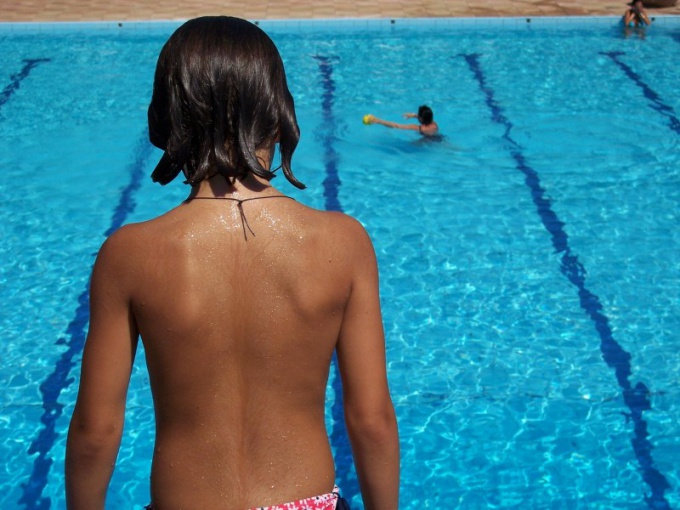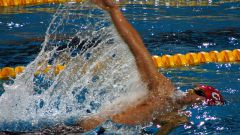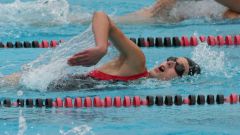In order to swim well and confidently tread water and not to get tired during a swim long distances, it is very important to learn how to breathe correctly. The breathing should be uniform, rhythmic and synchronized movements, and breaths deep. The most common problem of novice swimmers — breath during the stroke and attempts to blow out air only through the nose.
The technique of proper breathing based on a deep exhale made in a time when the face of the swimmer slightly submerged in the water. Exhalations should be no delay, as the excess air in the lungs presses on the chest muscles and negatively affects swimming speed.
In between breaths, the head should be kept straight. Don't move your head from side to side, this causes loss of coordination. Try to look at one spot in front of him. Do not attempt to lift the head too high and look up, this can get a neck, but to breathe you from this head position will not be easier.
For a start, it is recommended to practice in the pool and work out an exercise called "float". This exercise is easy not only for adults but also children. Take a deep breath, then sit down and immerse yourself in the water with his head for 10-15 seconds. Try under water, clutching her knees to herself count to fifteen and up. This exercise should be done at least 10 times in one workout.
The following exercise is a bit more complicated, but it will help to work out the synchronization of breathing, which is very important for swimming long distances. This exercise is also most convenient to work in the pool. Standing in water to the waist, lean forward so that his lips barely touched the surface of the water, and put your hands on his knees. Through the mouth take a deep breath, put face in water, then take a slow exhale into the water. Smoothly lift your head above the water and again take a single breath. Then again lower your face into the water and draw breath.
Lift head and lower face in water, you should try to do at the same pace, staying focused and not losing. It is important to coordinate their movement so that during the end of exhalation in the water you started to raise his head. This exercise is repeated during the first exercise 10-15 times for subsequent workouts, it can be repeated 20-30 times.
Breathing technique while swimming
The technique of proper breathing based on a deep exhale made in a time when the face of the swimmer slightly submerged in the water. Exhalations should be no delay, as the excess air in the lungs presses on the chest muscles and negatively affects swimming speed.
In between breaths, the head should be kept straight. Don't move your head from side to side, this causes loss of coordination. Try to look at one spot in front of him. Do not attempt to lift the head too high and look up, this can get a neck, but to breathe you from this head position will not be easier.
Exercises in teaching proper breathing.
For a start, it is recommended to practice in the pool and work out an exercise called "float". This exercise is easy not only for adults but also children. Take a deep breath, then sit down and immerse yourself in the water with his head for 10-15 seconds. Try under water, clutching her knees to herself count to fifteen and up. This exercise should be done at least 10 times in one workout.
The following exercise is a bit more complicated, but it will help to work out the synchronization of breathing, which is very important for swimming long distances. This exercise is also most convenient to work in the pool. Standing in water to the waist, lean forward so that his lips barely touched the surface of the water, and put your hands on his knees. Through the mouth take a deep breath, put face in water, then take a slow exhale into the water. Smoothly lift your head above the water and again take a single breath. Then again lower your face into the water and draw breath.
Lift head and lower face in water, you should try to do at the same pace, staying focused and not losing. It is important to coordinate their movement so that during the end of exhalation in the water you started to raise his head. This exercise is repeated during the first exercise 10-15 times for subsequent workouts, it can be repeated 20-30 times.


